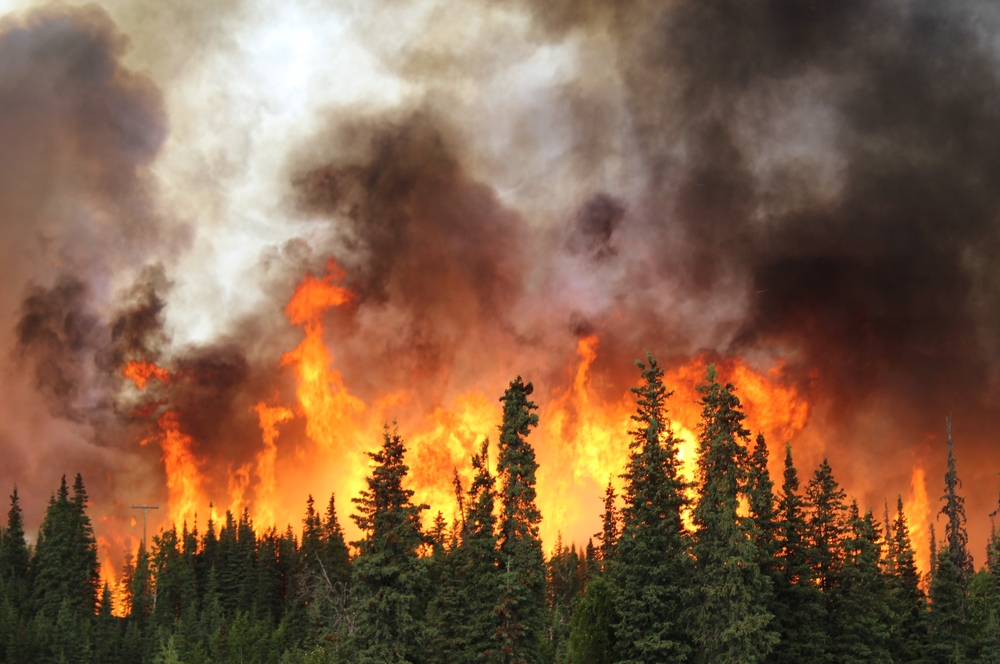Essential Guide to Wildfire Home Insurance in Arizona: Coverage, Mitigation, and Peace of Mind
July 1, 2025

Arizona’s climate and landscape—characterized by arid deserts, mountainous forests, and intense summer heat—have led to a surge in wildfire activity. In fact, in 2025 alone, over 25,000 wildfires burned more than 1 million acres across Western states like Arizona. These frequent and large-scale fires have caused carriers to raise premiums, reduce coverage, or withdraw entirely from high-risk zones, making it harder for homeowners to find protection.
With extreme heatwaves forcing insurers to reassess risk models , safeguarding your home against wildfire is no longer optional—it’s essential.
What Standard Homeowners Insurance Covers (and What It Doesn’t)
Most standard home insurance policies treat fire as a covered peril, including wildfire damage. They typically provide:
- Dwelling coverage: Rebuilding after fire or smoke damage
- Other-structures protection: Damage to sheds, garages, fences
- Personal property reimbursement: Repair or replacement of damaged contents
- Additional Living Expenses (ALE): Temporary housing and relocation costs
- Liability protection: Damage you’re responsible for if wildfire spreads to neighbors
However, in high-risk areas like Northern Arizona, limited availability, elevated deductibles, sublimits, and policy exclusions are becoming standard.
Common Pitfalls Homeowners Face in Arizona
- Underinsurance: Many homeowners discover post-fire that their dwelling coverage doesn’t account for rising rebuilding costs.
- Sublimits on fire damage: Some policies limit wildfire reimbursements far below overall policy limits, forcing homeowners to pay substantial costs out of pocket.
- Limited ALE support: Most insurers cap additional living expense reimbursement either by dollar amount or duration, which may be insufficient during major losses.
- Policy non-renewal or restricted coverage: Regulators often restrict insurers’ ability to adjust pricing; instead, carriers may choose not to renew policies in high-risk areas.
How HUB International Helps You Build Resilient Coverage
Proactive Risk Assessment
Hub International advises using tools like the USDA Forest Service’s Wildfire Risk to Communities map to understand your property’s exposure level. Brokers also recommend hardening your home and creating defensible space using IWBS guidelines.
Customized Insurance Options
Through the HUB High Net Worth Excess Wildfire Program, high-value homeowners can secure excess wildfire coverage in areas prone to fire, complementing primary carrier policies. For most homeowners, HUB experts identify carriers willing to offer tailored wildfire protections, including guaranteed replacement cost, expanded ALE coverage, and protection for detached structures.
Claims Response and Advocacy
HUB maintains constant communication with carriers, ensuring they rapidly deploy claims resources and support policyholders during wildfires . They offer checklists on damage documentation, immediate coverage notifications, and recovery steps.
Practical Steps to Strengthen Your Wildfire Protection
- Review your current homeowner policy thoroughly - Check for wildfire sublimits, ALE limits, and rebuild value assumptions. If coverage falls short, schedule a broker consultation.
- Create defensible space & mitigate risk - Remove flammable vegetation, maintain roof and gutter clearance, and upgrade to fire-resistant materials. These steps often yield premium discounts.
- Consider supplemental wildfire coverage - Especially if you’re high-net-worth or reside in a high-risk area, the HUB Excess Wildfire Program provides added layers of protection .
- Document your property and your losses - Keep photos, videos, and inventories handy. Promptly report claims and provide detailed documentation to expedite recovery.
- Prepare for evacuation - Build a wildfire kit, practice evacuation plans, and back up important documents—following FEMA, USDA, and HUB’s preparedness guidance.
- Renew and reassess annually - Work with your broker to revisit coverage limits, search for better carriers, explore mitigation-related discounts, and adjust for new risks or home upgrades.
Final Takeaways
Wildfire risk is not a distant threat in Arizona—it’s reality. Without tailored insurance and mitigation measures, homeowners can face devastating coverage gaps, sunk costs from sublimits, and out-of-pocket expenses during lengthy rebuilding processes. Regulatory constraints and insurer risk aversion are making wildfire coverage both harder to find and more expensive.
Fortunately, with proactive planning, defensible home strategies, and expert broker support, homeowners can gain confidence that their property, personal belongings, and financial stability are secure—even in the face of disaster. Let your insurance work as hard as you do: assess your risk, fortify your home, secure comprehensive coverage, and plan ahead before fire becomes a threat at your doorstep.
Footnotes
1 HUB International, “Risk Services Bulletin – Wildfire Preparedness 2025.”
2 HUB International, “Wildfire Resource Center.”
3 HUB International Press Release: “HUB Private Client Launches Exclusive High Net Worth Excess Wildfire Program,” Feb 2024.
4 Investopedia, “The Hidden Risks in Your Wildfire Insurance (and How to Fix Them).”
5 Wildfire Free Communities Association, “Homeowners Insurance and Wildfires.”
6 Axios Phoenix, “Home Insurance Gets Harder to Find as Wildfires, Costs Rise,” Oct 2024.
7 USDA Forest Service, “Wildfire Risk to Communities Map and Resources.”
8 FEMA, “Firewise USA® Program and Wildfire Evacuation Planning.”
